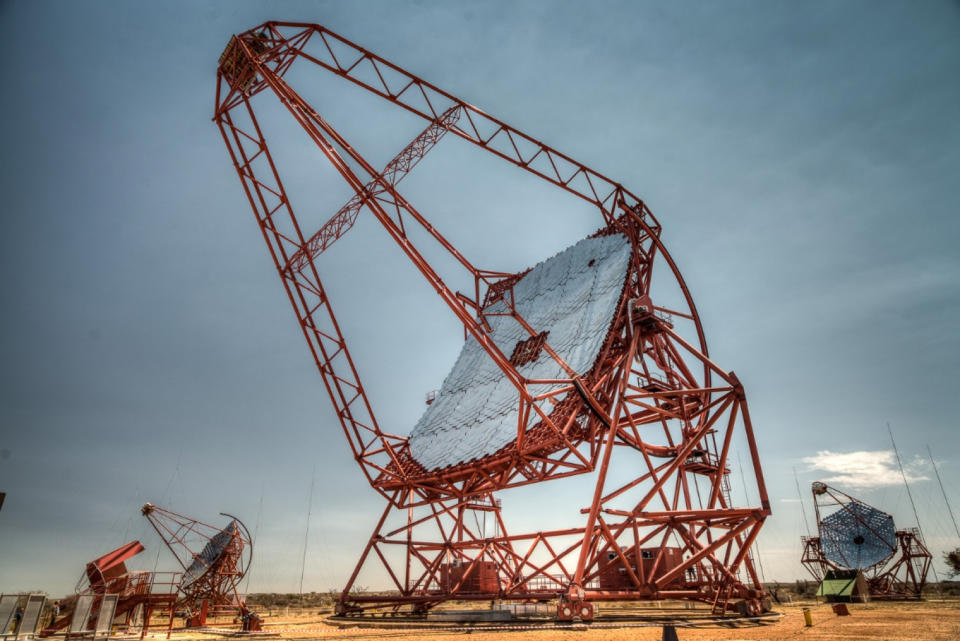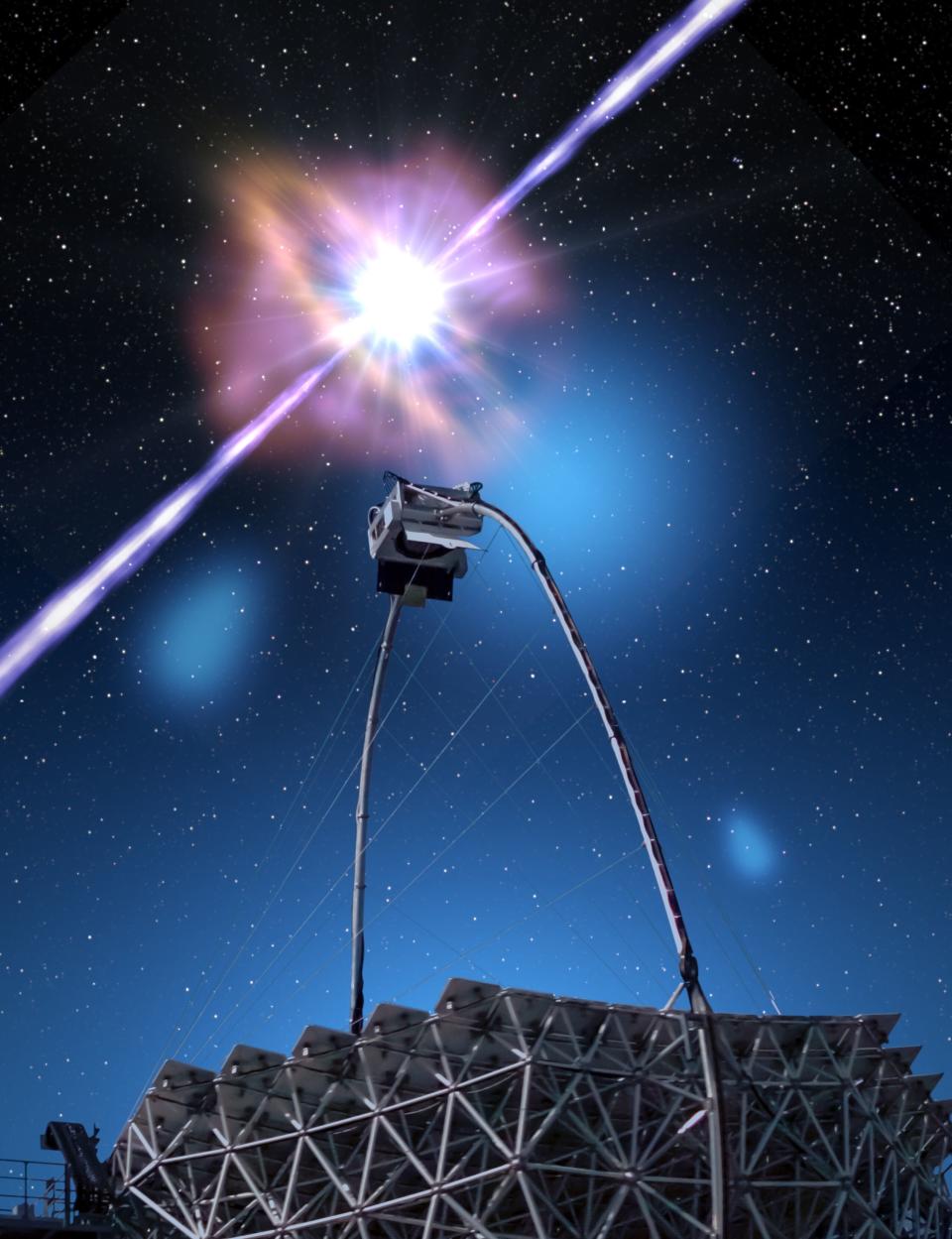Astronomers detect highest energy radiation ever seen in cosmic explosions
Astronomers have observed the highest energy radiation ever seen in gamma-ray bursts – the most powerful cosmic explosions in the universe.
The radiation, known as gamma-rays, was identified in two separate blasts that emitted more than 100 billion times as much energy as visible light.
These gamma-ray bursts, or GRBs, were observed using two specialised telescopes based in Namibia and the Canary Islands.
While gamma-rays, which exist as packets of electromagnetic energy known as photons, have been observed from the ground before, this is the first time they have been measured.
According to the scientists, understanding more about these extremely high-energy emissions could provide a new way to study the gigantic explosions.
David Berge, head of gamma-ray astronomy at DESY – a particle accelerator research centre in Germany, said: “For the first time, the two instruments have measured gamma radiation from gamma-ray bursts from the ground.
“These two groundbreaking observations have established gamma-ray bursts as sources for terrestrial gamma-ray telescopes.

“This has the potential to significantly advance our understanding of these violent phenomena.”
GRBs are associated with the destruction of massive stars or the merging of neutron stars in distant galaxies.
They are extremely bright but usually do not last for long. They can be as short as a fraction of a second or span as long as several minutes, with an average time of about 30 seconds.
Ground-based telescopes have a difficult time observing gamma rays because Earth’s atmosphere absorbs most of the radiation.
The first of the two cosmic explosions – dubbed GRB 180720B – was detected by the the High-Energy Stereoscopic System (HESS) telescope in Namibia in July 2018.
And GRB 190114C – the second burst – was recorded in January 2019 in the Canary Islands by the Major Atmospheric Gamma Imaging Cherenkov (MAGIC) telescope.
Data from the telescopes revealed that gamma-rays coming from the GRB 190114C had energies between 200 billion electron volts and one trillion electron volts, while the energies from the radiation emitted by the GRB 180720B were between 100 and 440 billion electron volts.

For comparison, visible light is in the range of about one to three electron volts.
Elisa Bernardini, leader of the MAGIC group at Desy, said: “These are by far the highest energy photons ever discovered from a gamma-ray burst.”
Both observations were triggered by Nasa’s Swift and Fermi satellites that monitor the sky for gamma-ray bursts and alert gamma-ray observatories around the world when they find something.
Analysis shows that the GRB 190114C is more than four billion light-years away from Earth, while the GRB 180720B is further away at a distance of six billion light years.
Andrew Taylor, a staff-scientist researcher at Desy who contributed to the HESS analysis, said: “The detection came quite unexpected, as gamma-ray bursts are fading fast, leaving behind an afterglow which can be seen for hours to days across many wavelengths from radio to X-rays, but had never been detected in very-high-energy gamma rays before.
“This success is also due to an improved follow-up strategy in which we also concentrate on observations at later times after the actual star collapse.”
The findings are published in three separate papers in the journal Nature.

 Yahoo News
Yahoo News 